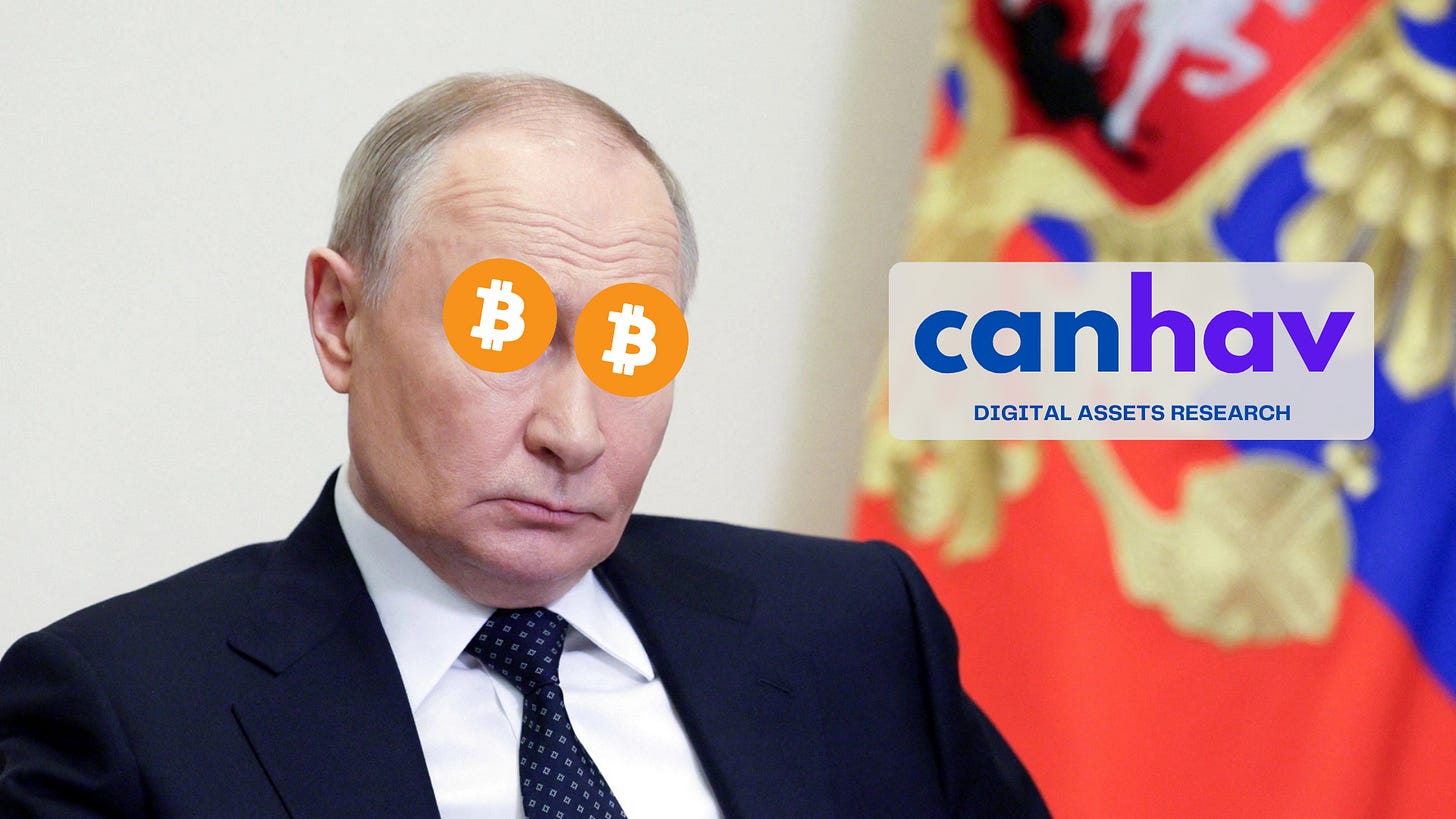Russia’s Crypto Derivatives Surge
Domestic Crypto Infrastructure to Bolster Russia’s Digital Economy in 2025
Russia’s financial sector is doubling down on cryptocurrency derivatives in 2025, driven by escalating Western sanctions over the Ukraine conflict. As U.S. and EU restrictions tighten, including a fresh 19th EU sanctions package targeting Russian crypto flows and energy exports. Moscow is leveraging digital assets to enhance financial sovereignty, facilitate cross-border trade, and integrate with BRICS partners. The latest milestone: The Saint-Petersburg Exchange (SPB) has launched cash-settled futures contracts tied to Bitcoin and BRICS stock indices, underscoring a rapid pivot toward regulated crypto tools.
Key Launches Fueling the Derivatives Boom
SPB, one of Russia’s largest stock exchanges, initiated trading on BTCUSD futures, which are pegged to the iShares Bitcoin Trust ETF and priced in U.S. dollars but settled in Russian rubles. These contracts offer investors exposure to global cryptocurrency markets through a domestic, regulated platform. Complementing this, SPB introduced futures on stock indices from BRICS nations—Brazil, Russia, India, China, and South Africa, opening diversification avenues amid de-dollarization efforts.
“This gives investors exposure to global crypto markets and emerging-market equities through a regulated domestic platform,” said SPB CEO Evgeny Serdyukov. He highlighted how BRICS futures align with Russia’s strategy to weave Bitcoin into broader economic resilience.
The SPB debut builds on momentum from the Moscow Exchange (MOEX), which rolled out Bitcoin futures in June 2025 and followed with Ethereum contracts in August, tracking BlackRock’s iShares Ethereum Trust ETF. These USD-quoted, ruble-settled products expire quarterly and are exclusively for qualified investors. SPB is also gearing up for Ethereum futures, expanding its lineup.
SPB’s platform runs on fully in-house technology, enabling scalability for additional instruments, such as options, while minimizing risks through cash settlement—no physical crypto delivery is required. “We have created our own technology stack for derivatives trading, which dramatically expands SPB’s infrastructure,” Serdyukov added.
Stablecoins as Sanctions Workarounds: The A7A5 Phenomenon
A cornerstone of Russia’s 2025 crypto push is the A7A5 stablecoin, a ruble-pegged token launched in February on the Ethereum and Tron networks by entities linked to Promsvyazbank. Designed to evade sanctions and streamline cross-border payments, A7A5 has processed over $6 billion in transactions since U.S. restrictions were imposed on its operators in August. Cumulative volume has ballooned to around $68 billion, with over 41 billion tokens in circulation.
Despite U.S. sanctions on creators like Garantex and A7 in early 2025—plus fresh OFSI hits on Kyrgyzstani networks like Grinex—A7A5 surged 250% in a single day on September 25, hitting a $500 million market cap and claiming 41% of the non-dollar stablecoin market. This makes it the largest non-USD stablecoin, mocking Western efforts to choke ruble routes into Bitcoin.
The EU is now moving to sanction A7A5 directly, with finance ministers set to vote on October 9 as part of broader curbs on Russian evasion tactics. Yet, the stablecoin’s resilience highlights crypto’s role in sustaining trade amid isolation.
Regulatory Shifts and Infrastructure Overhaul
Earlier this year, the Bank of Russia approved crypto derivatives for qualified investors, those with over ₽100 million (~$1.2 million) in assets or an annual income of ₽50 million (~$600,000)—sparking competition between SPB and MOEX. New 2025 laws mandate reporting crypto transactions exceeding 600,000 rubles to tax authorities, striking a balance between growth and oversight.
The Central Bank is conducting a nationwide audit of Bitcoin and other digital assets to assess risks and integrate them into the regulatory framework. Policymakers project Russia’s crypto products market will exceed 2 trillion rubles ($21 billion) as institutions pile in.
To counter sanctions, Russia is developing a sovereign cryptocurrency exchange and infrastructure for seamless international transactions, thereby bypassing Western systems. This includes fast-tracked domestic exchanges, settlement networks, and even plans for investment funds to access crypto derivatives by 2026, levelling the field for broader adoption.
Geopolitical Drivers and Future Outlook
The Ukraine war has supercharged these developments: Sanctions have slashed traditional payment channels, pushing Russia toward crypto for 2025 trade volumes estimated at billions in evaded flows. As RAND notes, Moscow’s crypto schemes are now crucial for sustaining international commerce, with BRICS integration amplifying the process of de-dollarization.
While access remains elite-tier, surging institutional demand—fueled by stablecoins like A7A5 and futures on Bitcoin, Ethereum, and BRICS assets—signals a state-backed digital economy on the rise. With EU sanctions looming tomorrow, Russia’s crypto derivatives aren’t just financial tools; they’re weapons in a hybrid economic war. As one analyst quipped on X, “The BRICS bloc is turning orange”—a nod to Bitcoin’s growing hue in global finance.
Subscribe
Want to learn more about crypto derivatives and get free and early access to the CanHav Crypto Derivatives Risk Mitigation platform?



